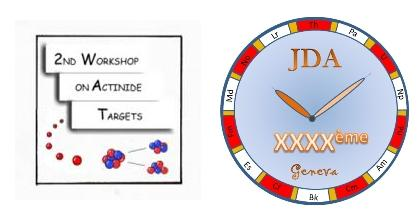Speaker
Mr
BORIS DORADO
(CEA CADARACHE)
Description
Uranium dioxide UO2 is the standard nuclear fuel used in current pressurized water reactors. The description of this oxide by first-principles calculations remains challenging because of the peculiar properties of the uranium 5f electrons which do not allow the standard LDA or GGA functionals to accurately reproduce its electronic properties.
In this study, we use the DFT+U approximation to take into account the strong correlations among 5f electrons and we first investigate the stability of the Jahn-Teller distortion in UO2 seen experimentally at low temperature. We also study the relative stability of the collinear (1k) and the noncollinear (3k) antiferromagnetic orders, taking into account the spin-orbit coupling.
Second, in order to better understand the behavior of uranium dioxide under irradiation, we investigate the stability and migration mechanisms of point defects, in particular oxygen defects, whose excess governs radiation tolerance, as well as fission product accommodation and release. Activation energies for oxygen self-diffusion have already been measured and reported in the literature, but still little is known about migration mechanisms. We therefore determine the formation energies of the oxygen single interstitial and vacancy in UO2, and we compare the results obtained in the fluorite structure with those in the Jahn-Teller distorted structure. We finally calculate migration energies for these defects using the Nudged Elastic Band method. We investigate simple migration pathways, such as the interstitialcy mechanism for the single interstitial, as well as diffusion along the [100] and [110] directions for the single vacancy.
Using formation and migration energies calculated, we determine the activation energies for oxygen diffusion in UO2 and compare our results with recent DFT+U results, as well as with new experimental values determined by electrical conductivity measurements.
In order to prevent the system from reaching metastable states created by the DFT+U approximation, all calculations are carried out using an efficient scheme based on the control of uranium 5f occupation matrices.
Primary author
Mr
BORIS DORADO
(CEA CADARACHE)
Co-authors
Dr
MARJORIE BERTOLUS
(CEA CADARACHE)
Dr
MICHEL FREYSS
(CEA CADARACHE)




